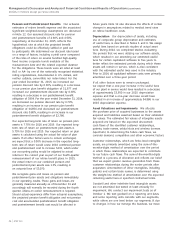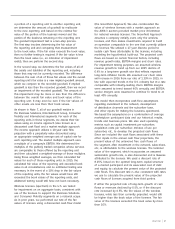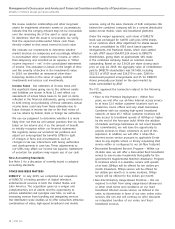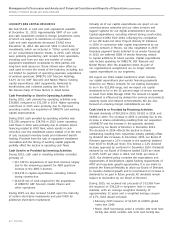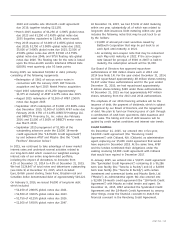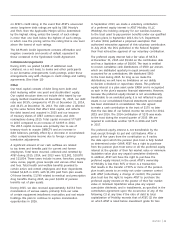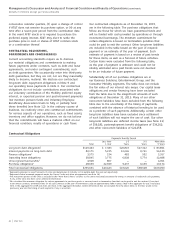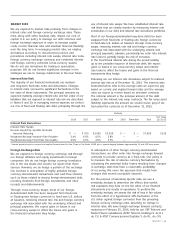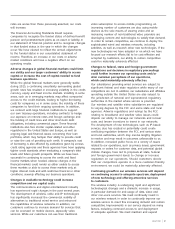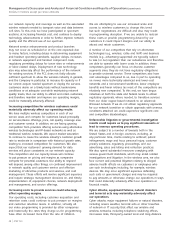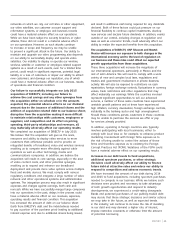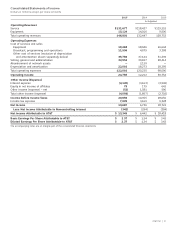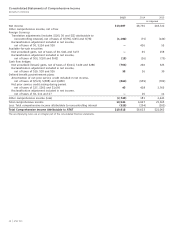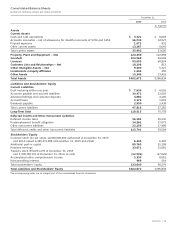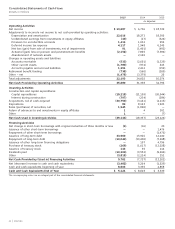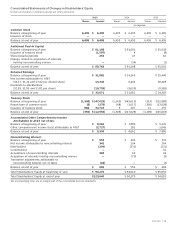AT&T Wireless 2015 Annual Report Download - page 38
Download and view the complete annual report
Please find page 38 of the 2015 AT&T Wireless annual report below. You can navigate through the pages in the report by either clicking on the pages listed below, or by using the keyword search tool below to find specific information within the annual report.
Management’s Discussion and Analysis of Financial Condition and Results of Operations (continued)
Dollars in millions except per share amounts
36
|
AT&T INC.
these changes in customer demands, we are likely to
experience greater pressure on pricing and margins as
we continue to compete for customers who would have
even less discretionary income.
Adverse changes in medical costs and the U.S. securities
markets and a decline in interest rates could materially
increase our benefit plan costs.
Our costs to provide current benefits and funding for future
benefits are subject to increases, primarily due to continuing
increases in medical and prescription drug costs, and can
be affected by lower returns on funds held by our pension
and other benefit plans, which are reflected in our financial
statements for that year. Investment returns on these funds
depend largely on trends in the U.S. securities markets and
the U.S. economy. We have experienced historically low
interest rates during the last several years. While annual
market returns and increased volatility have pressured
asset returns in the short-term, we expect long-term
market returns to stabilize. During 2015, the overall bond
rates increased, which results in lower benefit obligations.
In calculating the costs included on our financial statements
of providing benefits under our plans, we have made certain
assumptions regarding future investment returns, medical
costs and interest rates. While we have made some changes
to the benefit plans to limit our risk from increasing medical
costs, if actual investment returns, medical costs and interest
STOCK PERFORMANCE GRAPH
Comparison of Five Year Cumulative Total Return
AT&T Inc., S&P 500 Index, and S&P 500 Integrated Telecom Index
12/10 12/11 12/12 12/13 12/14 12/15
240
220
200
180
160
140
120
100
80
S&P 500 Integrated
Telecom Index
AT&T Inc. S&P 500 Index
102
118
157
178
181
124
141
145
138
108
153
128
142
109
141
The comparison above assumes $100 invested on December 31, 2010, in AT&T common stock, Standard & Poor’s 500 Index
(S&P 500), and Standard & Poor’s 500 Integrated Telecom Index (S&P 500 Integrated Telecom). Total return equals stock price
appreciation plus reinvestment of dividends.
RISK FACTORS
In addition to the other information set forth in this
document, including the matters contained under the
caption “Cautionary Language Concerning Forward-Looking
Statements,” you should carefully read the matters described
below. We believe that each of these matters could materially
affect our business. We recognize that most of these factors
are beyond our ability to control and therefore we cannot
predict an outcome. Accordingly, we have organized them
by first addressing general factors, then industry factors
and, finally, items specifically applicable to us.
The current U.S. economy has changed our customers’
buying habits and a failure to adequately respond
could materially adversely affect our business.
We provide services and products predominantly to
consumers and large and small businesses in the
UnitedStates. We also provide services to larger
businesses throughout the world. The current uneven
economic recovery in the United States continues to
pressure some of our customers’ demand for and ability
to pay for existing services, especially wired services,
including video, and their interest in purchasing new services.
Customers are changing their buying habits in response
to both ongoing economic conditions and technological
advances. Should we fail to respond promptly to address


